Arts & Entertainment
I will survive
New documentary uses archival video footage to explore early days of AIDS
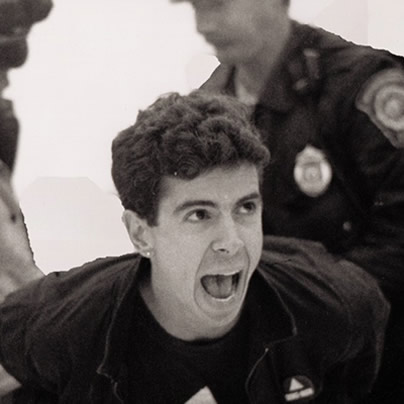
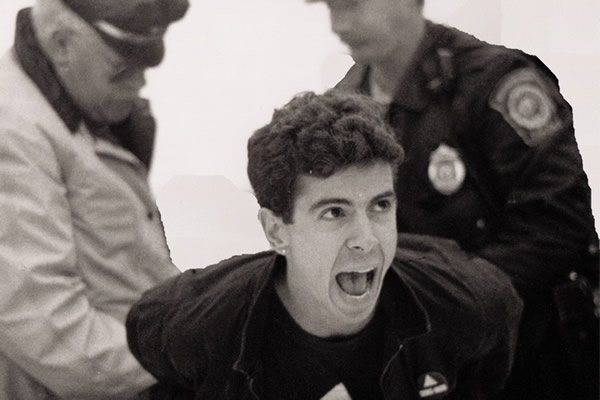
Peter Staley in a scene from ‘How to Survive a Plague.’ (photo by William Lucas Walker courtesy Sundance Selects)
As a journalist, openly gay writer David France is pretty fearless. The award-winning author has tackled such topics as the AIDS crisis, sexual abuse in the Catholic Church, the coming-out of former New Jersey governor James McGreevey and the brutal murder of Private Barry Winchell.
But, when he was poised to make the leap to documentary filmmaker, there was one thing that terrified him — the soundtrack.
“That aspect of film-making was nerve-wracking,” he says. “I couldn’t sleep. I write in total silence. I don’t play any music at all. Print journalists don’t have to deal with music. There has never been any musical accompaniment to anything I have done before.”
Luckily, he found great partners to help him develop the soundtrack of his first film, the documentary “How to Survive a Plague,” which chronicles the early years of AIDS activism. He turned to the Red Hot Organization, a non-profit musical production company that raises money to support the fight against HIV/AIDS. They suggested he listen the work of Arthur Russell, an avant garde gay songwriter and performer who was living in downtown Manhattan during the time frame covered by the film who died of AIDS-related causes in 1992.
France says that the suggestion was “an inspired proposal.” Paul Heck, executive director at Red Hot, describes Russell’s work as “captivating, personal and profoundly beautiful music that is accessible yet complex all at once.” Heck introduced France to composers Stuart Bogie and Luke O’Malley who began work on the score based on Russell’s music. At first, the collaboration was a challenge for France, who says, “I didn’t have the words to talk about the music.” Luckily, he learned to trust his instincts.
“I just started talking about how it felt, and that’s how we worked out the score.”
The narrative and visual aspects of documentary filmmaking came more easily to the novice director.
“I’ve always been a long-form journalist, so I’ve always been a storyteller. I decided to undertake a major project and look at the early days of AIDS activism, to try and make sense of what happened. What more could time tell us about those early days?”
He knew the New York Public Library had an extensive collection of amateur and professional movies made by AIDS activists during that period, so he dove in.
“I immediately jumped to the footage. I got captivated by how immediate and intensely personal and up-close it was. It reminded me how we felt in those early days.”
In the end, France and his team assembled several hundred hours of footage and began editing the material into a feature-length documentary. Aside from a few filmed interviews, this remarkable and powerful film consists entirely of this archival material, primary historical documentation captured by a then-emerging technology: the video camera.
“How to Survive A Plague” uses this riveting archival material, largely shot by the activists themselves at meetings and protests around the country, to tell the story of ACT-UP (the AIDS Coalition to Unleash Power) and TAG (the Treatment Action Group). As Franco points out, these direct-action groups saved millions of lives by battling hatred, ignorance, complacency and apathy in the face of the emerging plague.
Ultimately they changed the way health care is delivered in this country. By demanding attention, they achieved incredible things.
“The biggest thing is why not ask for the moon? Why not ask for it all? That’s what they did. There was not a single pill and they demanded a cure. Science was not even thinking like that. As total outsiders to that process, they were able to develop an agenda that everyone felt was out of reach and they were able to get close. We don’t have a cure yet, but we’re much closer than we would have been.”
France feels this kind of broad vision is missing from the LGBT movement today.
“We’ve overly narrowed our agenda for the community. Now it’s marriage. There is so much more we could be advocating for more, including a push to combat HIV. There are still high transmission rates for men who have sex with men and the national LGBT groups are not paying attention to that.”
“How to Survive A Plague” opens Oct. 12 at Landmark Theatres in the D.C. area.

Rob Reiner, most known for directing untouchable classics like “The Princess Bride,” “Misery,” “When Harry Met Sally…,” and “Stand by Me,” died Dec. 14 alongside his wife, Michele Singer Reiner, in their Los Angeles residence. While investigations are actively underway, sources have told PEOPLE Magazine that the pair’s son, Nick Reiner, killed his parents and has been taken into custody.
Reiner was a master of every genre, from the romantic comedy to the psychological thriller to the coming-of-age buddy movie. But in addition to his renowned work that made him a household name, Reiner is also remembered as a true advocate for the LGBTQ community. In 2009, Reiner and his wife co-founded the American Foundation for Equal Rights, helping fight against California’s Prop 8 same-sex marriage ban. They were honored at the 2015 Human Rights Campaign Las Vegas Gala.
In a statement, HRC President Kelley Robinson said: “The entire HRC family is devastated by the loss of Rob and Michele Reiner. Rob is nothing short of a legend — his television shows and films are a part of our American history and will continue to bring joy to millions of people across the world. Yet for all his accomplishments in Hollywood, Rob and Michele will most be remembered for their gigantic hearts, and their fierce support for the causes they believed in — including LGBTQ+ equality. So many in our movement remember how Rob and Michele organized their peers, brought strategists and lawyers together, and helped power landmark Supreme Court decisions that made marriage equality the law of the land — and they remained committed to the cause until their final days. The world is a darker place this morning without Rob and Michele — may they rest in power.”
Reiner’s frequent collaborators have also spoken out as the industry is in mourning, including figures like Ron Howard and John Cusack.
A joint statement from Jamie Lee Curtis and Christopher Guest (who starred in Reiner’s “This is Spinal Tap”) reads: “Christopher and I are numb and sad and shocked about the violent, tragic deaths of our dear friends Rob and Michele Singer Reiner and our ONLY focus and care right now is for their children and immediate families and we will offer all support possible to help them. There will be plenty of time later to discuss the creative lives we shared and the great political and social impact they both had on the entertainment industry, early childhood development, the fight for gay marriage, and their global care for a world in crisis. We have lost great friends. Please give us time to grieve.”
While attending the 2019 HRC Los Angeles Dinner, Reiner spoke out about the need for equality: “We have to move past singling out transgender, LGBTQ, black, white, Jewish, Muslim, Latino. We have to get way past that and start accepting the idea that we’re all human beings. We’re all human beings, we all share the same planet, and we should all have the same rights, period. It’s no more complicated than that.”

The Gay Men’s Chorus of Washington perform “The Holiday Show” at Lincoln Theatre (1215 U St., N.W.). Visit gmcw.org for tickets and showtimes.
(Washington Blade photos by Michael Key)
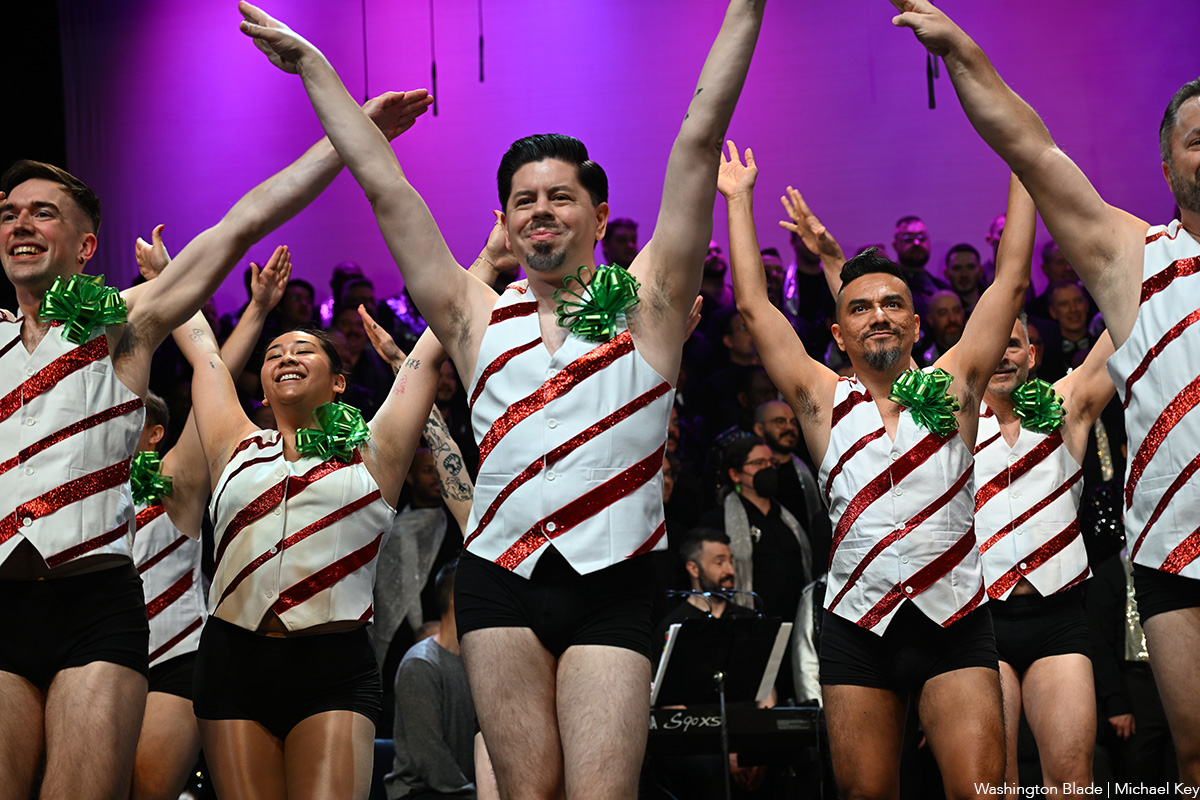


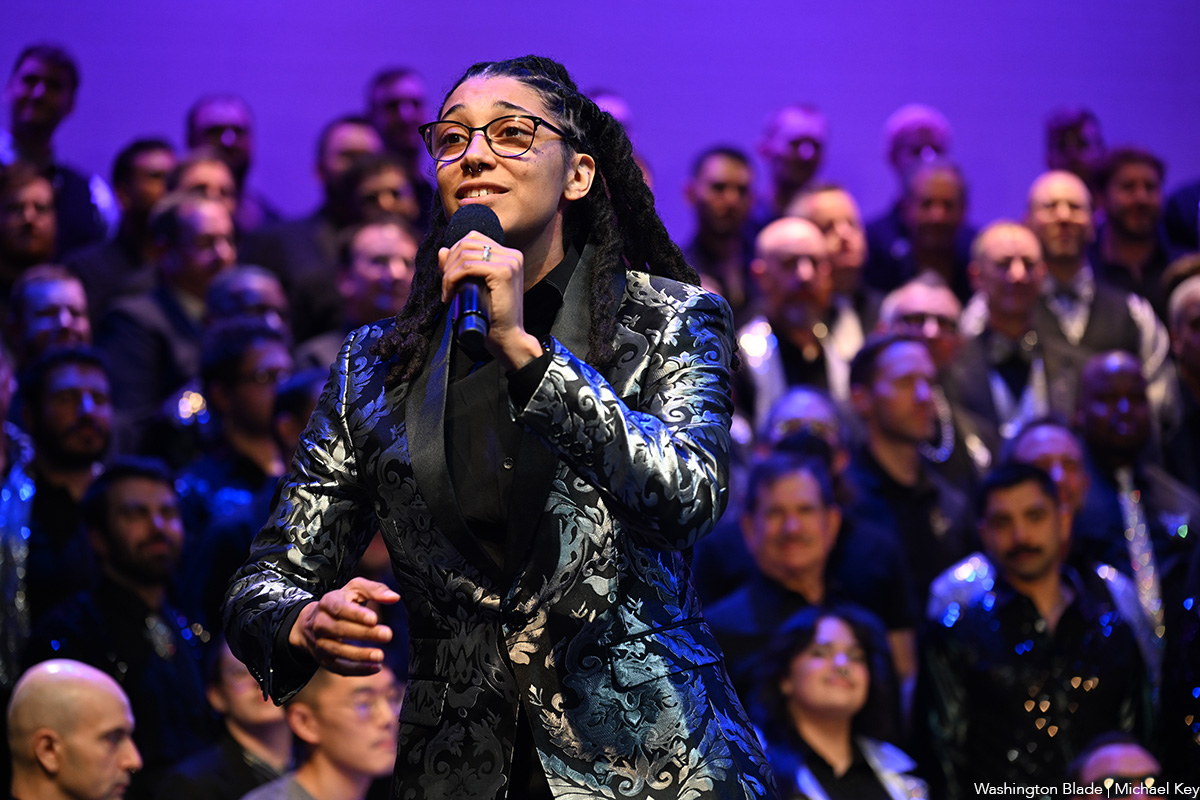
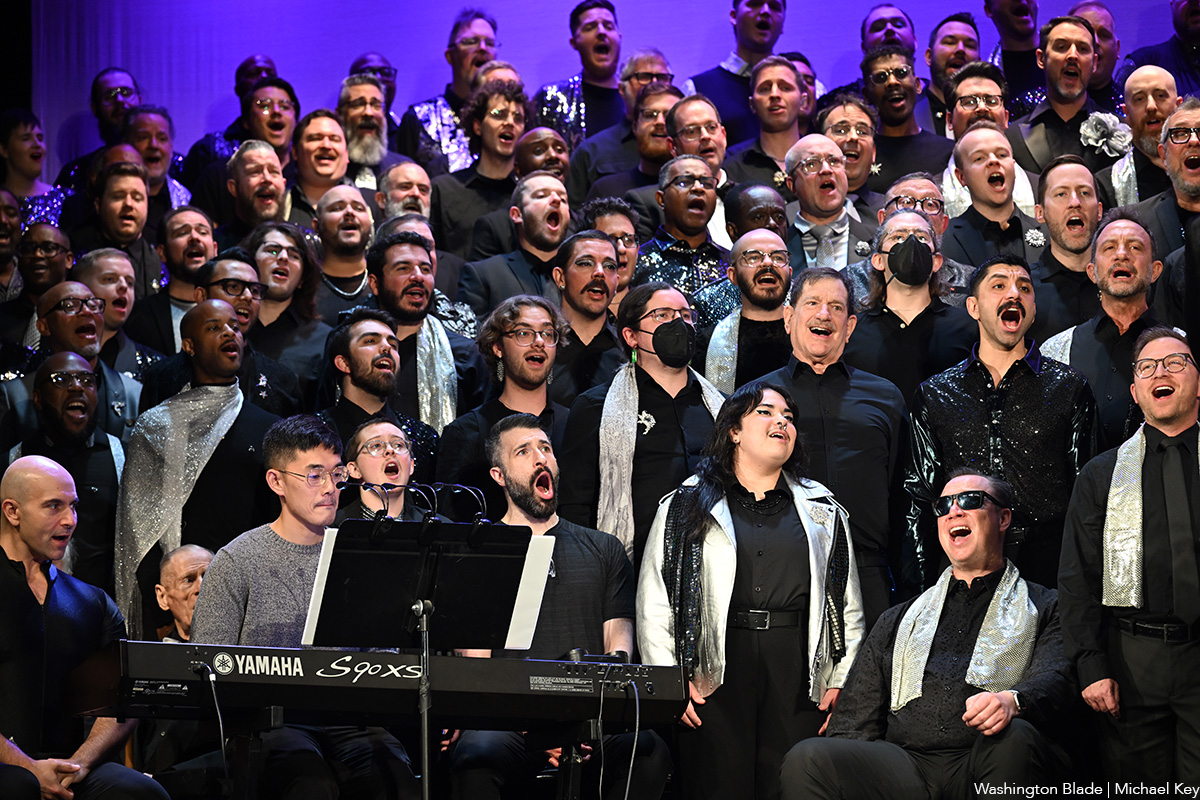






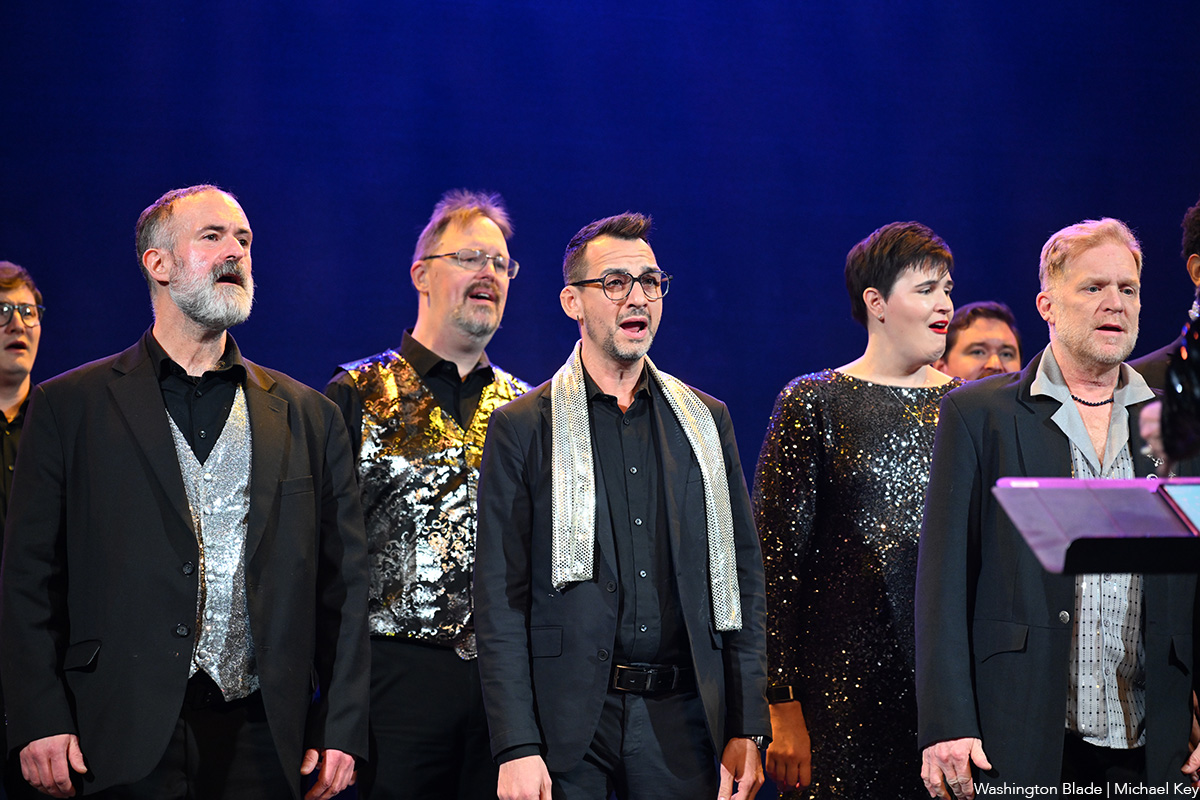
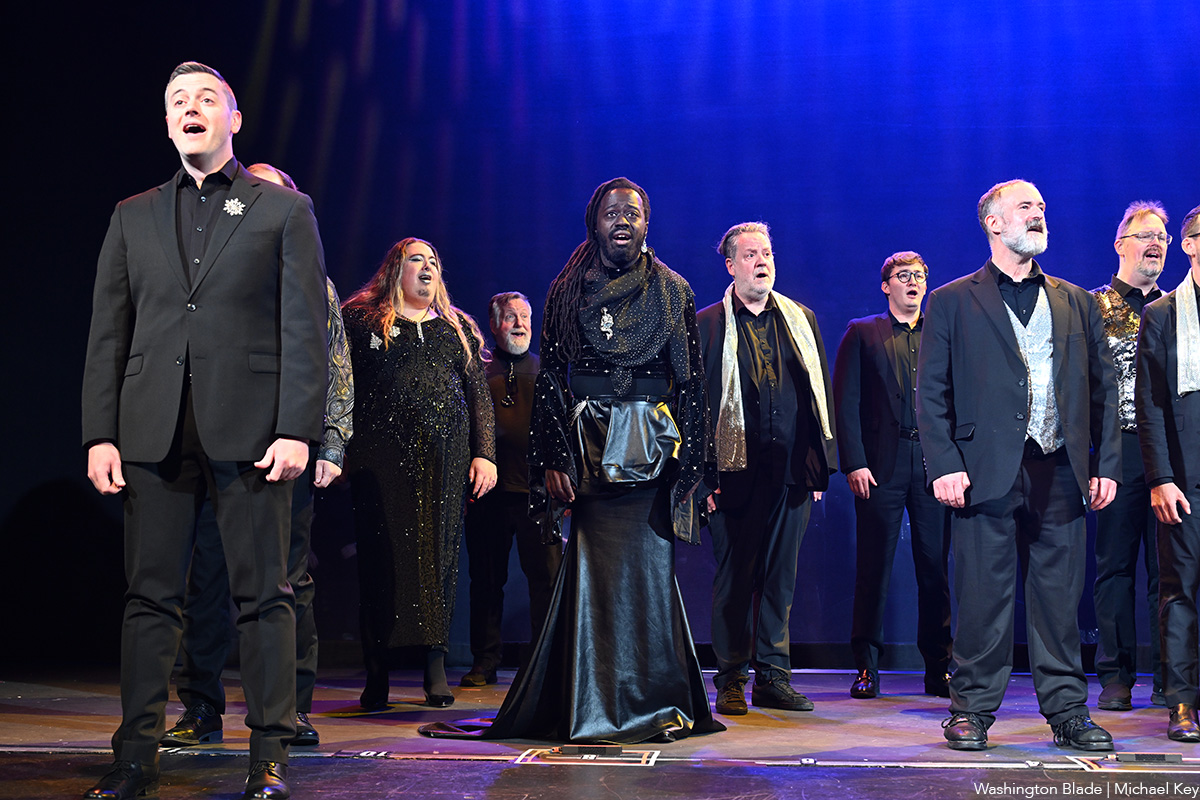
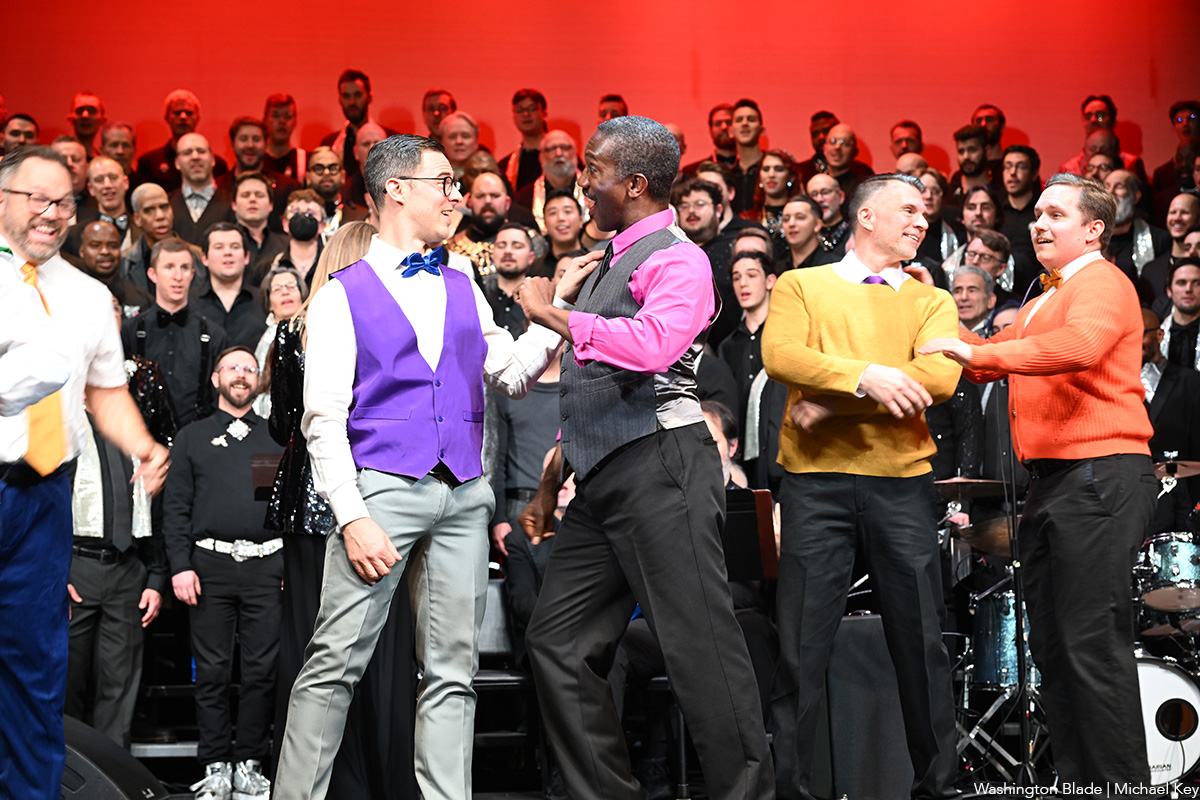
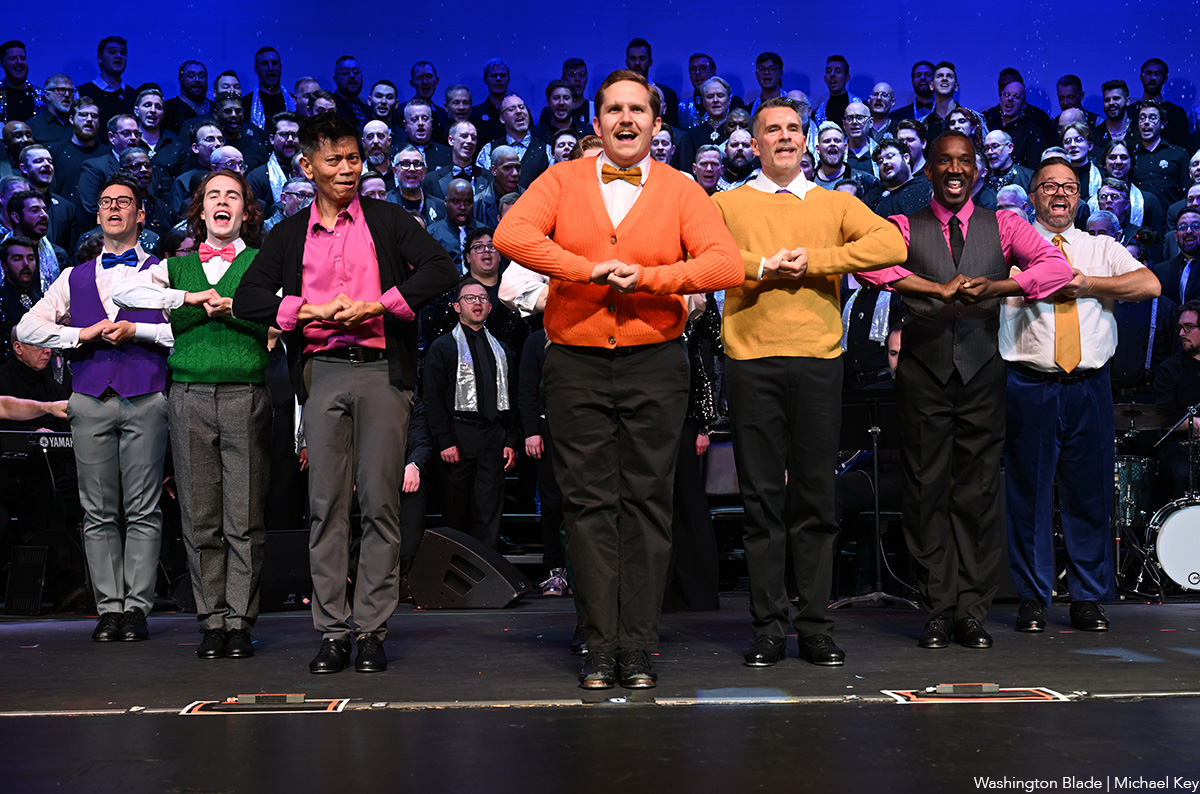

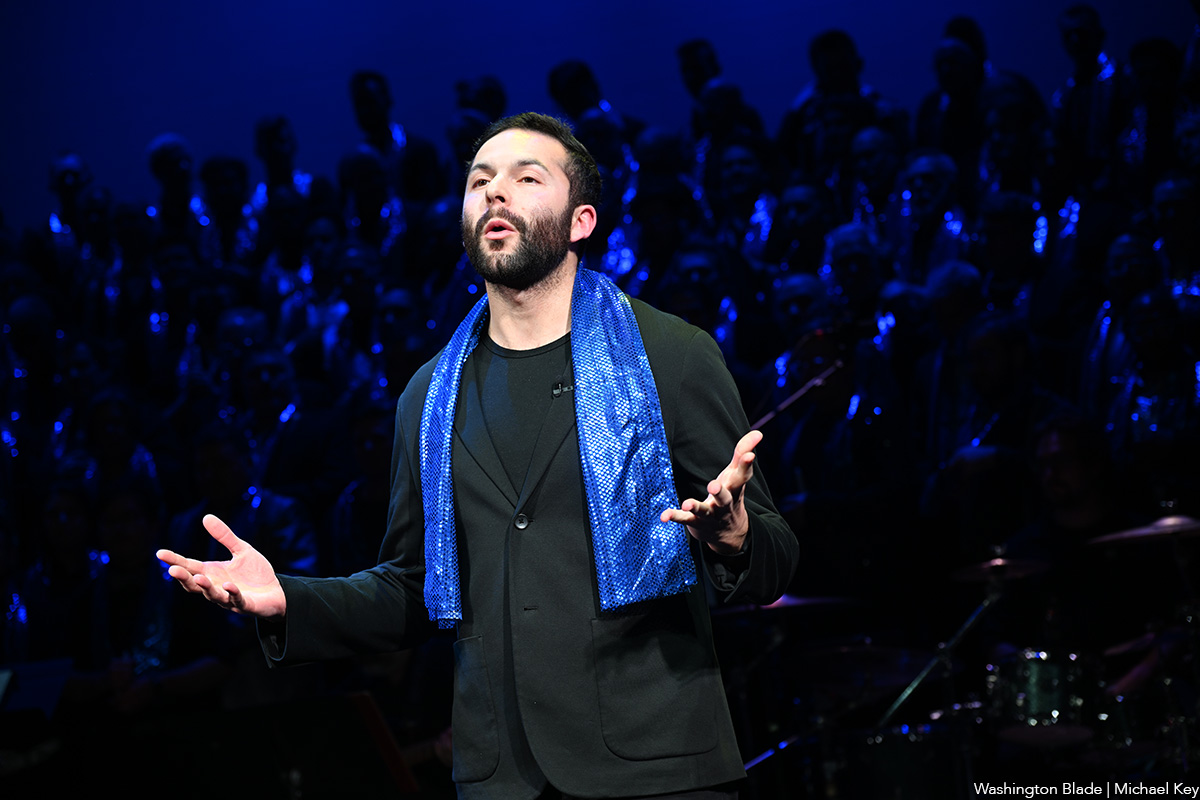
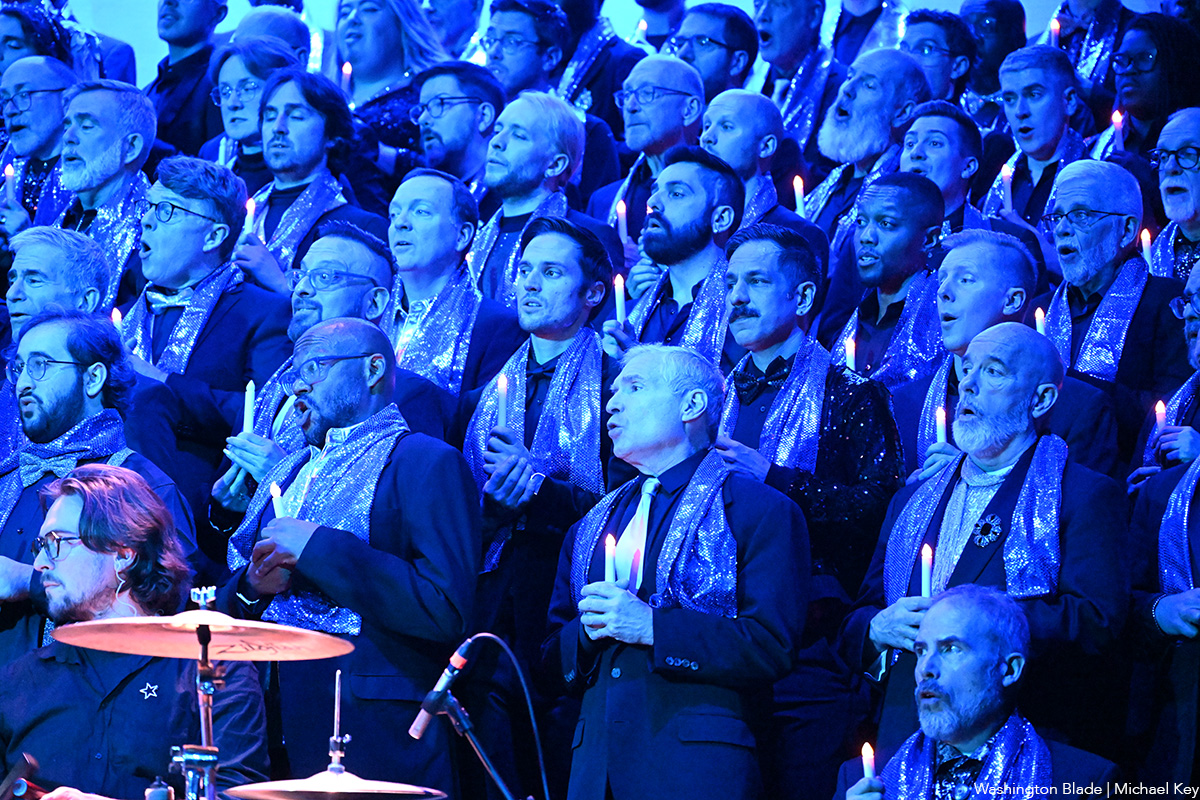
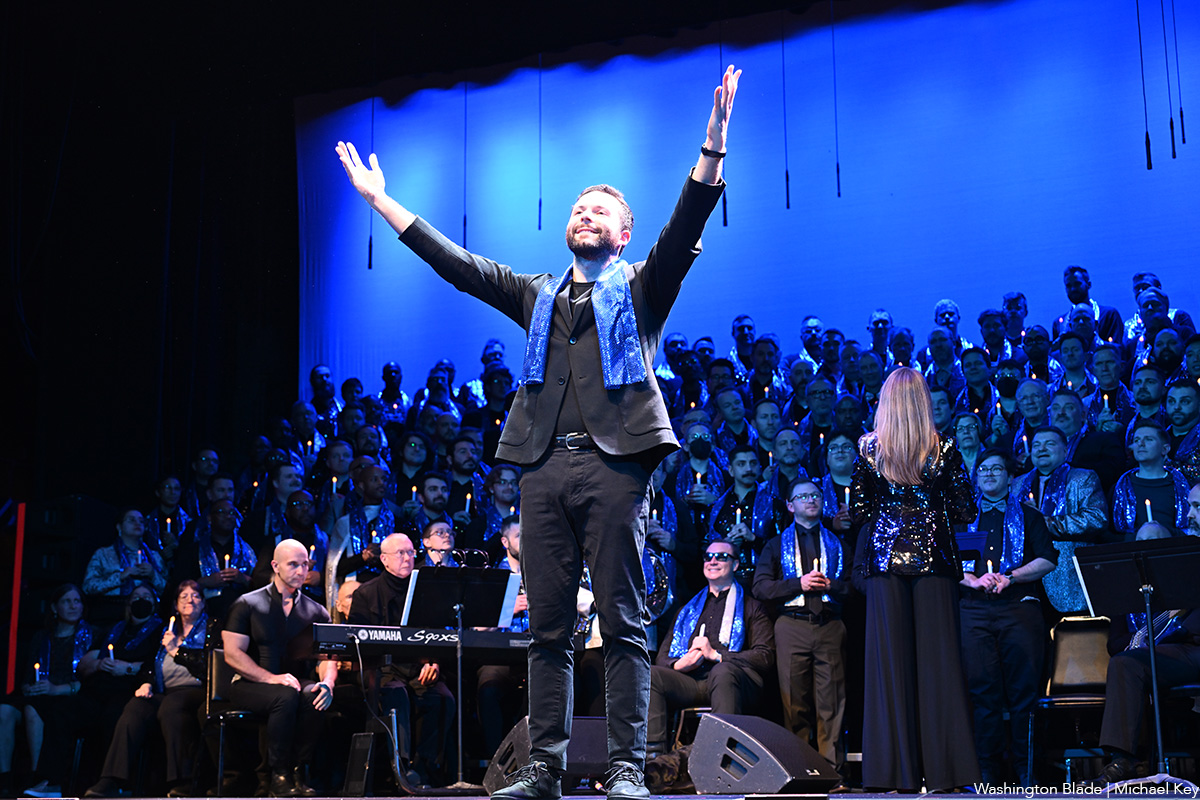


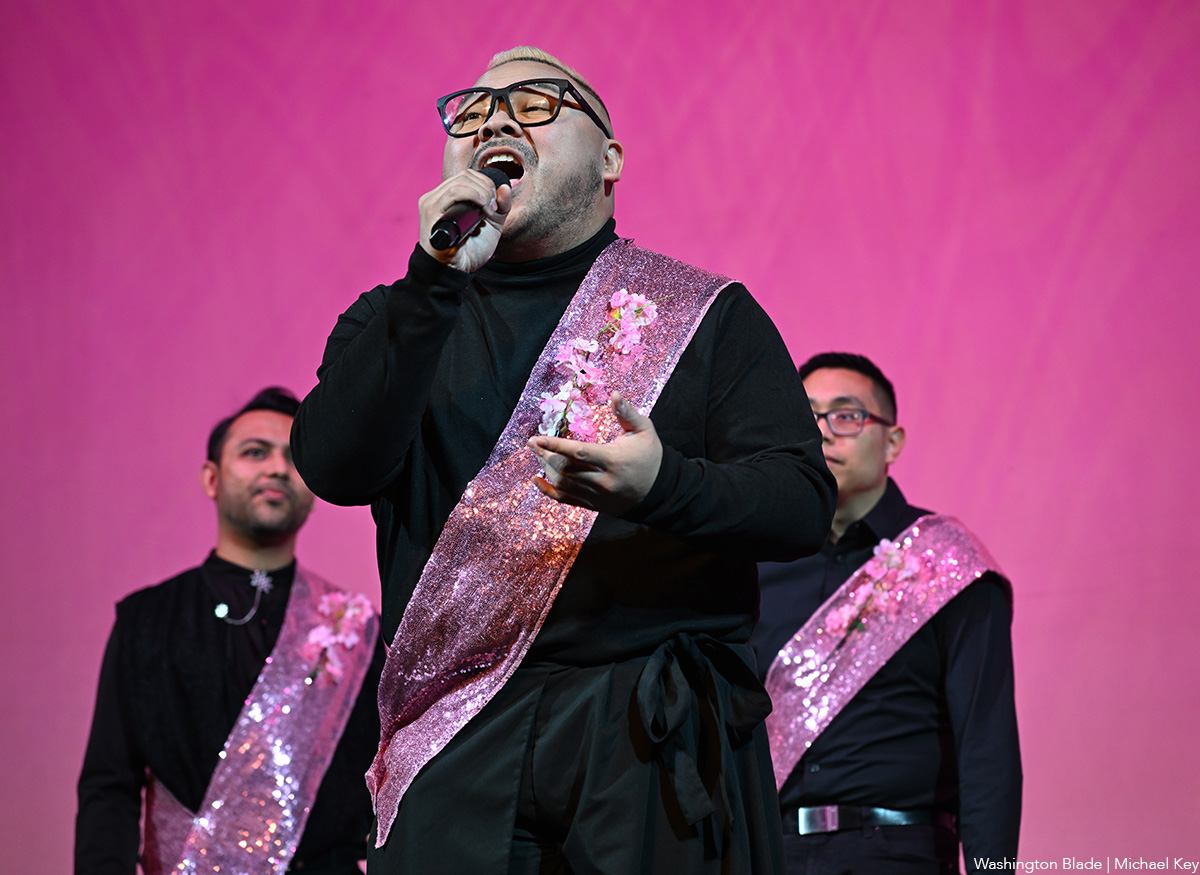


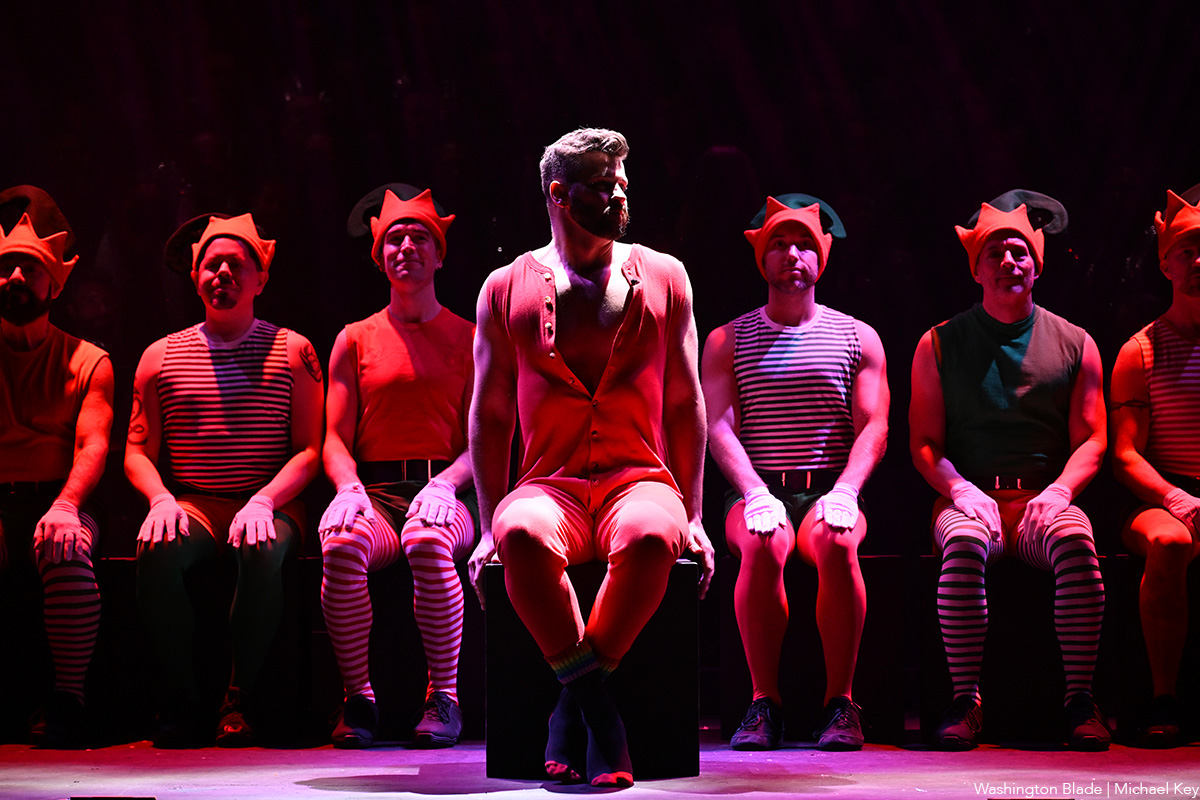

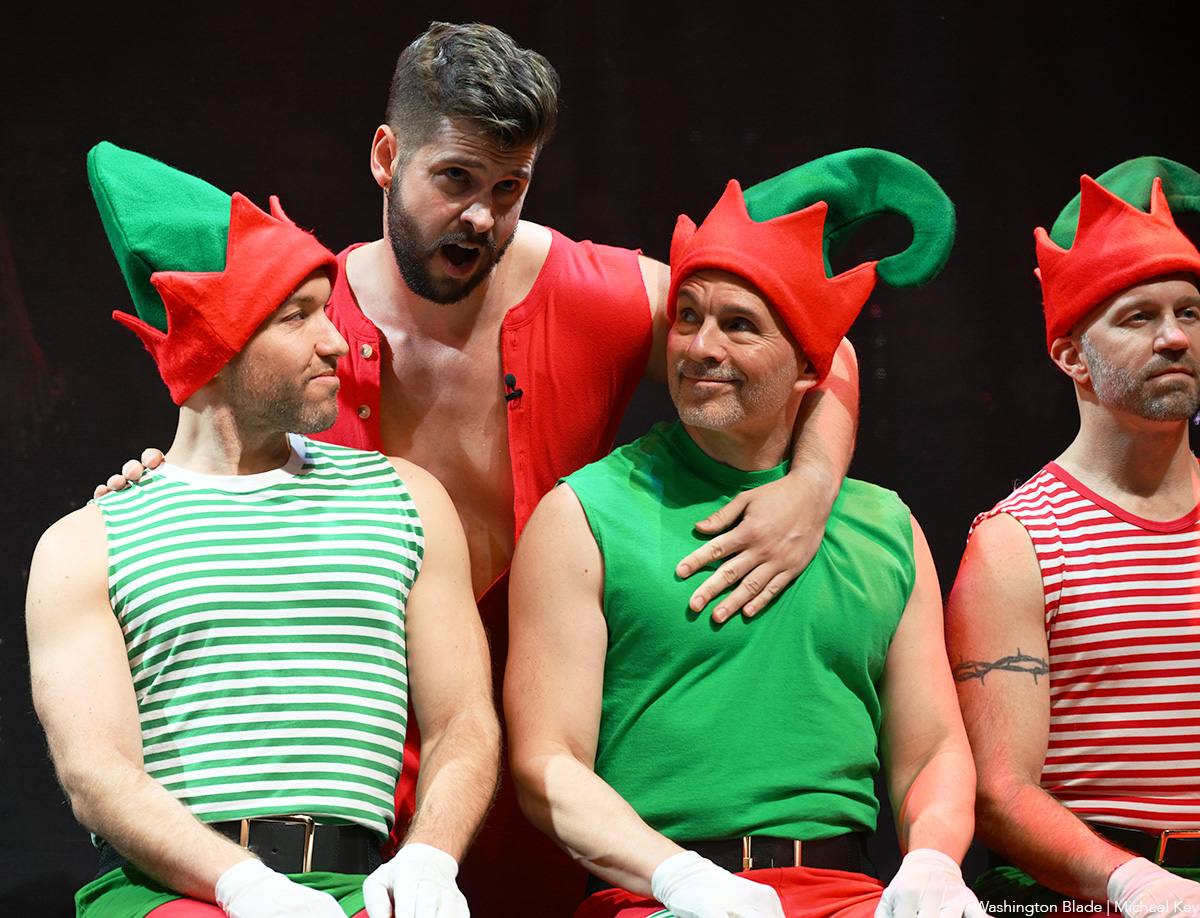

























Santa will be very relieved.
You’ve taken most of the burden off him by making a list and checking it twice on his behalf. The gift-buying in your house is almost done – except for those few people who are just so darn hard to buy for. So what do you give to the person who has (almost) everything? You give them a good book, like maybe one of these.
Memoir and biography
The person who loves digging into a multi-level memoir will be happy unwrapping “Blessings and Disasters: A Story of Alabama” by Alexis Okeowo (Henry Holt). It’s a memoir about growing up Black in what was once practically ground zero for the Confederacy. It’s about inequality, it busts stereotypes, and yet it still oozes love of place. You can’t go wrong if you wrap it up with “Queen Mother: Black Nationalism, Reparations, and the Untold Story of Audley Moore” by Ashley D. Farmer (Pantheon). It’s a chunky book with a memoir with meaning and plenty of thought.
For the giftee on your list who loves to laugh, wrap up “In My Remaining Years” by Jean Grae (Flatiron Books). It’s part memoir, part comedy, a look back at the late-last-century, part how-did-you-get-to-middle-age-already? and all fun. Wrap it up with “Here We Go: Lessons for Living Fearlessly from Two Traveling Nanas” by Eleanor Hamby and Dr. Sandra Hazellip with Elisa Petrini (Viking). It’s about the adventures of two 80-something best friends who seize life by the horns – something your giftee should do, too.
If there’ll be someone at your holiday table who’s finally coming home this year, wrap up “How I Found Myself in the Midwest” by Steve Grove (Simon & Schuster). It’s the story of a Silicon Valley worker who gives up his job and moves with his family to Minnesota, which was once home to him. That was around the time the pandemic hit, George Floyd was murdered, and life in general had been thrown into chaos. How does someone reconcile what was with what is now? Pair it with “Homestand: Small Town Baseball and the Fight for the Soul of America” by Will Bardenwerper (Doubleday). It’s set in New York and but isn’t that small-town feel universal, no matter where it comes from?
Won’t the adventurer on your list be happy when they unwrap “I Live Underwater” by Max Gene Nohl (University of Wisconsin Press)? They will, when they realize that this book is by a former deep-sea diver, treasure hunter, and all-around daredevil who changed the way we look for things under water. Nohl died more than 60 years ago, but his never-before-published memoir is fresh and relevant and will be a fun read for the right person.
If celeb bios are your giftee’s thing, then look for “The Luckiest” by Kelly Cervantes (BenBella Books). It’s the Midwest-to-New-York-City story of an actress and her life, her marriage, and what she did when tragedy hit. Filled with grace, it’s a winner.
Your music lover won’t want to open any other gifts if you give “Only God Can Judge Me: The Many Lives of Tupac Shakur” by Jeff Pearlman (Mariner Books). It’s the story of the life, death, and everything in-between about this iconic performer, including the mythology that he left behind. Has it been three decades since Tupac died? It has, but your music lover never forgets. Wrap it up with “Point Blank (Quick Studies)” by Bob Dylan, text by Eddie Gorodetsky, Lucy Sante, and Jackie Hamilton (Simon & Schuster), a book of Dylan’s drawings and artwork. This is a very nice coffee-table size book that will be absolutely perfect for fans of the great singer and for folks who love art.
For the giftee who’s concerned with their fellow man, “The Lost and the Found: A True Story of Homelessness, Found Family and Second Chances” by Kevin Fagan (One Signal / Atria) may be the book to give. It’s a story of two “unhoused” people in San Francisco, one of the country’s wealthiest cities, and their struggles. There’s hope in this book, but also trouble and your giftee will love it.
For the person on your list who suffered loss this year, give “Pine Melody” by Stacey Meadows (Independently Published), a memoir of loss, grief, and healing while remembering the person gone.
LGBTQ fiction
For the mystery lover who wants something different, try “Crime Ink: Iconic,” edited by John Copenhaver and Salem West (Bywater Books), a collection of short stories inspired by “queer legends” and allies you know. Psychological thrillers, creepy crime, cozies, they’re here.
Novel lovers will want to curl up this winter with “Middle Spoon” by Alejandro Varela (Viking), a book about a man who appears to have it all, until his heart is broken and the fix for it is one he doesn’t quite understand and neither does anyone he loves.
LGBTQ studies – nonfiction
For the young man who’s struggling with issues of gender, “Before They Were Men” by Jacob Tobia (Harmony Books) might be a good gift this year. These essays on manhood in today’s world works to widen our conversations on the role politics and feminism play in understanding masculinity and how it’s time we open our minds.
If there’s someone on your gift list who had a tough growing-up (didn’t we all?), then wrap up “I’m Prancing as Fast as I Can” by Jon Kinnally (Permuted Press / Simon & Schuster). Kinnally was once an awkward kid but he grew up to be a writer for TV shows you’ll recognize. You can’t go wrong gifting a story like that. Better idea: wrap it up with “So Gay for You: Friendship, Found Family, & The Show That Started It All” by Leisha Hailey & Kate Moennig (St. Martin’s Press), a book about a little TV show that launched a BFF-ship.
Who doesn’t have a giftee who loves music? You sure do, so wrap up “The Secret Public: How Music Moved Queer Culture from the Margins to the Mainstream” by Jon Savage (Liveright). Nobody has to tell your giftee that queer folk left their mark on music, but they’ll love reading the stories in this book and knowing what they didn’t know.
The Blade may receive commissions from qualifying purchases made via this post.
-

 Congress5 days ago
Congress5 days agoEXCLUSIVE: George Santos speaks out on prison, Trump pardon, and more
-

 The White House5 days ago
The White House5 days agoWhite House deadnames highest-ranking transgender official
-

 The White House4 days ago
The White House4 days agoAs house Democrats release Epstein photos, Garcia continues to demand DOJ transparency
-

 Opinions5 days ago
Opinions5 days agoReflecting on six years on the CAMP Rehoboth board




















